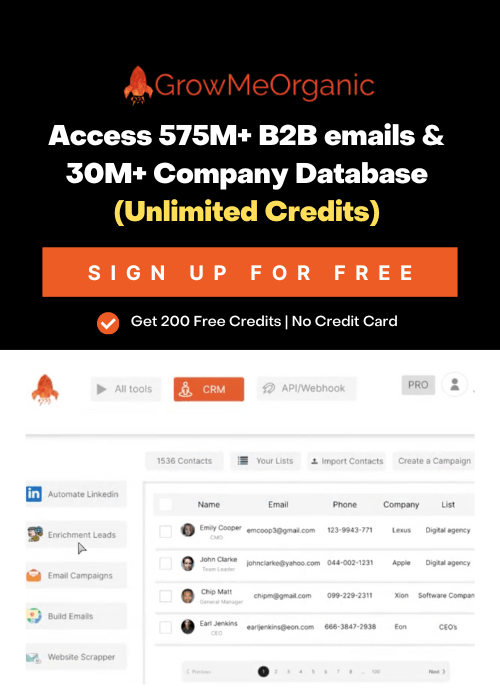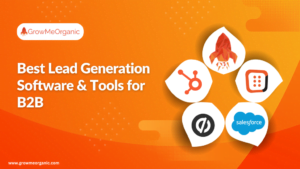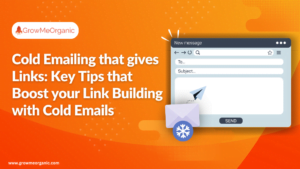Even though email has been an integral customer touchpoint for nearly 30 years, it’s often overlooked in localization efforts. If you’ve translated your website and app but skipped localizing your emails, you’re missing a major chance to engage with your global audience.
Whether you’re a global enterprise or a small business, localization is vital to connecting with international customers. While much of the focus tends to be on website and app localization, don’t overlook other elements that might also need attention.
Let’s explore email localization and how it can make your emails feel personal and considerate while aligning with local customs and preferences.
What Is Email Localization?
“The key to an effective multi-national email campaign is sending messages in your subscribers’ native languages. Even if English is widely spoken among your customer and prospect base, translating your emails for an international audience can lead to significant improvements in response — sometimes double or even triple the clickthrough rate, according to marketers we’ve spoken to.”
– Marketing Sherpa
Email localization is important for successful marketing. It’s about tweaking your emails – like newsletters – to fit different markets’ languages, cultures, and preferences. The payoff? A more personal connection with your audience.
By sending emails in their native language and considering cultural nuances, you build trust and loyalty. Plus, localized emails often see better open and click-through rates, which means more engagement and higher conversions.
Consistency is also crucial. When you localize across all channels, you boost customer experience and strengthen your brand’s reputation.
The Process Of Email Localization
Like any business task, email localization requires a clear plan. Here’s a straightforward strategy to get started.
Researching & Understanding Target Audience
The first step is simple yet insightful: understand your target market. While you could invest in an expensive survey, a more practical approach is to ask local experts to create customer personas.
A persona is a detailed profile of your ideal customer, including their goals, hobbies, motivations, and lifestyle. It helps you see cultural differences, like why Americans prefer pickups or why family dynamics vary across regions.
This research reveals what will resonate with your audience and what won’t, giving you a solid starting point for localization.
Tailoring Content As Per Local Preferences
Email content isn’t just about words. It includes headers, logos, images, and sometimes videos. Different cultures consume content differently – some prioritize text, others focus on visuals, and even colors can have cultural significance.
Your branding, photography, and even design elements like fonts and column widths may need to be adjusted for localization.
Accurate Content Translation
The biggest task is translating, and it takes time. Prioritize translators who have lived in your target locale and understand its nuances. Worried about losing control?
Remember, the goal isn’t a perfect word-for-word translation – it’s to make the email work effectively.
Formatting & Design
Next, here is a quick reminder to ensure your localized text and assets flow smoothly. Languages can vary in space – some read right-to-left, while others go top-to-bottom.
Plus, a standard font size in Arabic might look tiny to European readers. Remember that the same email subject line can have a different character count once translated, which could impact your SEO.
Testing & Optimization
Localization isn’t a one-time task – it’s an ongoing journey. Successful email localization involves constantly analyzing opens, CTRs, conversions, and unsubscribe rates to find ways to improve.
Try A/B testing by tweaking one element at a time. For example, does switching from blue to red design elements boost CTRs in Asia? Dive into the data, make adjustments, and retest; always be open to new insights.
The Benefits Of Email Localization
Increase Open Rates
Start with a subject line in your recipient’s native language. This simple step can significantly boost your email open rates. When a non-native English speaker sees messages in their mother tongue, it shows you care about their needs and comfort.
Increase Clickthrough Rates
The same goes for calls to action, like clicking a link. Whether you embed the link in the text or provide the full URL, effective localization increases your chances of getting clicks. Readers are more likely to engage and explore further when your email is easier to understand.
Ensure Higher Readership
If you’re not fluent in multiple languages, reading in your native tongue is easier and more enjoyable. By localizing your email content, you’re not just making it accessible – you’re also showing that you understand and respect the local market. That’s a big win!
Smooth The User Experience
It’s frustrating to click a link and land on a page in a different language, even if you know both. True localization means communicating in the same language, from that first click to customer service. If you start in your customers’ language, finish in it, too—it makes their journey seamless.
Reduce Customer Service Costs
English as a second language can look quite different from the “standard” British or American versions in many parts of the world. Take Southeast Asia, for example – its English dialects are vibrant but far from the Queen’s English.
That’s why providing customer support in local languages like Tagalog, Bahasa, or Hindi can be beneficial. It helps customers grasp your instructions quickly, leading to quicker problem resolution and fewer repeat issues.
The Difference Between Email Translation And Localization
Translating the tone of an American marketer’s email into Chinese can lead to misunderstandings, especially since humor and cultural references often don’t translate well.
Plus, you might run into legal issues; for instance, directly comparing your product to a competitor’s can be illegal in some regions.
This shows that translation and localization are not the same. It’s about conveying your message clearly and legally, involving more than words.
Why Email Localization Segmentation is Important?
Well, only 19.36% of retail emails are opened. This is because only about 25% of companies focus on their consumers’ regional preferences.
As of January 2020, English was 25% of the common languages used on the Internet. However, 75% of worldwide internet users don’t speak native English.
More than half of customers prefer to make their purchasing decision based on the description of the product or service in their native language.
Challenges In Email Localization
The biggest hurdle when sending campaigns is understanding your audience and creating content accordingly. Also, the theme and tone must be adjusted based on the region.
For instance, Coca-Cola has partnerships in 90 developing markets that help it design its message and visual template based on people, languages, clothing, and events.
Let’s look at some other challenges that need to be focused on.
Local Email List Management
Always segment your email subscriber list by language. Before you send the list, you can survey your customers to ensure you have accurate data. Display all your language versions in a single email campaign; otherwise, you can’t target subscribers by language.
Length of Subject Lines
Every subject line should be the right length. I prefer to include fifty characters or fewer to display without truncation. Internationalization increases the difficulty of email localization. For instance, you would need more characters to express the same concept while translating English to Italian.
Also, the preheaders should be up to 22 characters that could fit entirely in the email preview or inbox. So, A/B tests different subject lines and preheaders.
Localized Email Copy
I prefer to include a call to action in your email template. Using buttons or images can pose a problem when translated, as words can be long. Use a one-column email layout to compensate for variable content widths based on languages.
Localize Visuals/Images
Use appropriate images, photos, graphics, or other visual elements and localize them for your international audience. Without localization, your audience can misunderstand.
People have different cultural backgrounds, so ensure your content meets the recipients’ expectations. The best option is to use more symbols-based images with a flexible sign-off process.
Character Encoding
Most email designers and coders prefer to use UTF-8 character encoding for HTML email documents, which is also the default encoding for many email clients.
Stay in Line with Local Laws
An anti-spam policy or permission policy is sufficient to keep you out of any legal trouble. But always ensure you provide an option to unsubscribe and provide your contact details in your emails. Also, resolve the unsubscribe requests within a set number of days.
Let’s take a look at country-by-country laws.
United States
The CAN-SPAM Act has mentioned guidelines on sending emails into the US from US servers.
European Union
The European Union is creating new legislation daily to help better protect its citizens from data breaches. The General Data Protection Regulation, created by the European Commission, the Council of the EU, and the European Parliament, has been enforced since 2018.
Under this, companies must notify citizens of a data breach within 72 hours, obtain prior consent to use a citizen’s information and provide a simple opt-out option to revoke consent and protect consumer data.
Australia
The Spam Act describes commercial emails and includes provisions such as identifying the correct legal name of the individual/organization sending the email and the Australian Business Number, if applicable.
Canada
CASL (Canada’s Anti-Spam Legislation) provides strict guidelines for gaining opt-in consent from email subscribers.
Best Practices For Email Localization
Let’s focus on some quick wins that can significantly boost your localization efforts. Here’s where to start:
- Craft a Compelling Subject Line: Think about what will grab your audience’s attention—whether it’s a cost-saving message, a benefit highlight, or an emotional appeal. This will vary across cultures, so write it accordingly.
- Choose Appropriate Greetings and Sign-offs: Respectful addresses are essential, especially in countries like Japan and Korea. Once you establish a standard, you can easily reuse it in future emails.
- Format Dates and Times Correctly: Nothing screams “foreigner” like the wrong date format. Ensure your CRM reflects local preferences, whether DD/MM/YYYY or MM/DD/YYYY.
- Embrace Local Holidays and Cultural References: Not every holiday is celebrated similarly. For instance, Japan has two Valentine’s Days. Align your offers with local celebrations, but be cautious – what’s popular in one country may not be in another, like St. Patrick’s Day in the UK versus the U.S.
Implementing these strategies will make a significant impact with minimal effort.
Successful Email Localization Cases
Coachhub
It might seem like a huge undertaking, but Coachhub makes people’s development easy. With users in 90 countries, they create personalized coaching programs, and email communication plays a key role.
When you get an email from Coachhub, it will be in your local language and packed with culturally relevant references. They’ve streamlined content localization, ensuring efficient translation and team connections.
Meister
Meister, a transatlantic SaaS provider, excels at developing apps. Their flagship MindMeister boasts 14 million users.
They rely on service and marketing emails to keep in touch with this vast audience. By collaborating in ten languages, the Meister team shares screenshots and comments, while notifications help them connect with translators worldwide.
Wrap Up
Running successful localized email marketing campaigns is rewarding, but they need to fit into a broader, customer-focused marketing strategy. When done right, they attract more customers, strengthen your brand, and drive profits.
To see results, avoid common mistakes, tackle challenges head-on, and follow the right steps for effective email localization discussed in this article. Also, choose a suitable email marketing service to streamline the process.
Book a demo, and we’ll walk you through all the features that make email localization easier.
About Post Author
Anant Gupta
Growth Hacker, Marketing Automation Enthusiast & Founder of GrowMeOrganic







